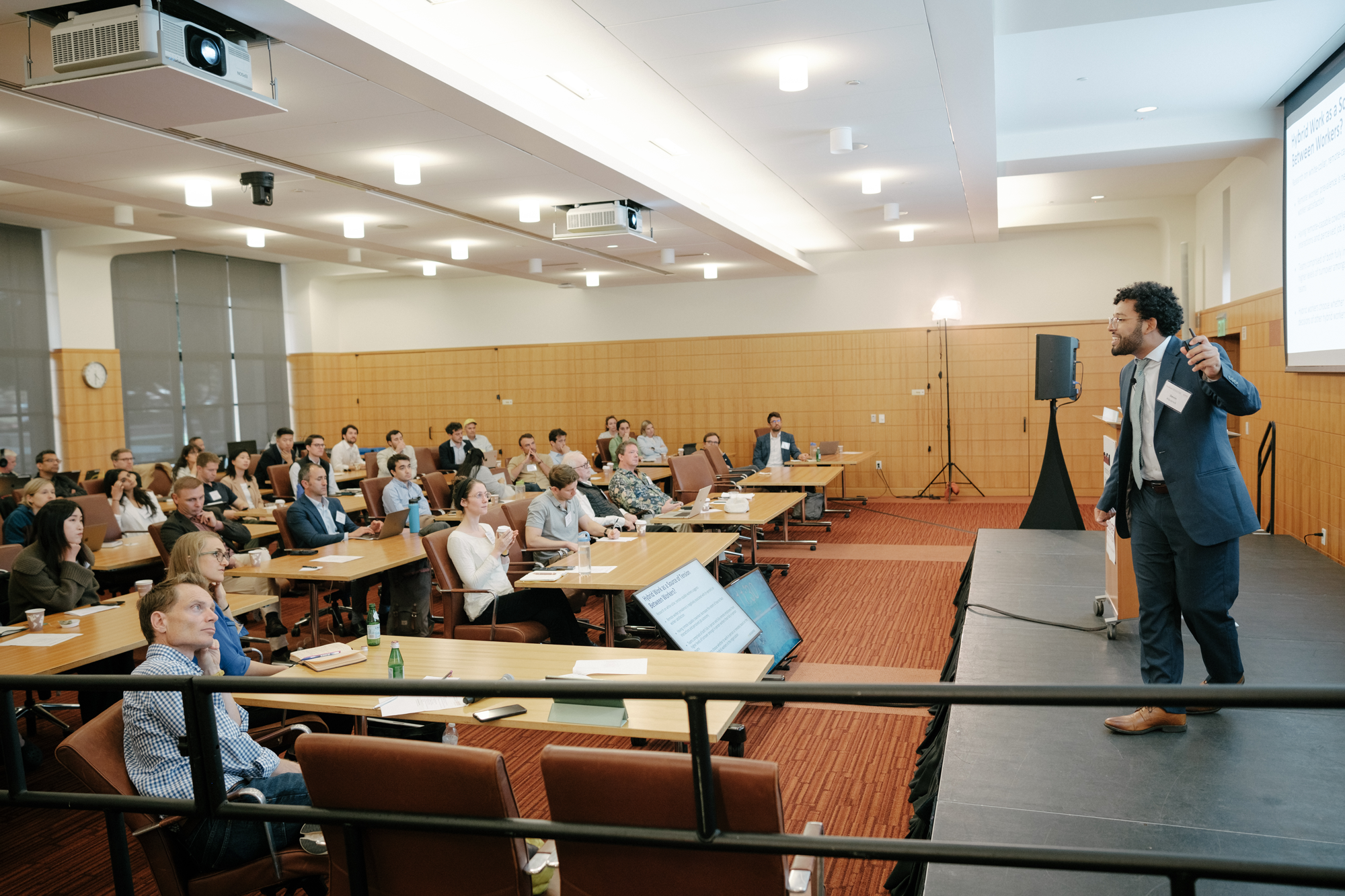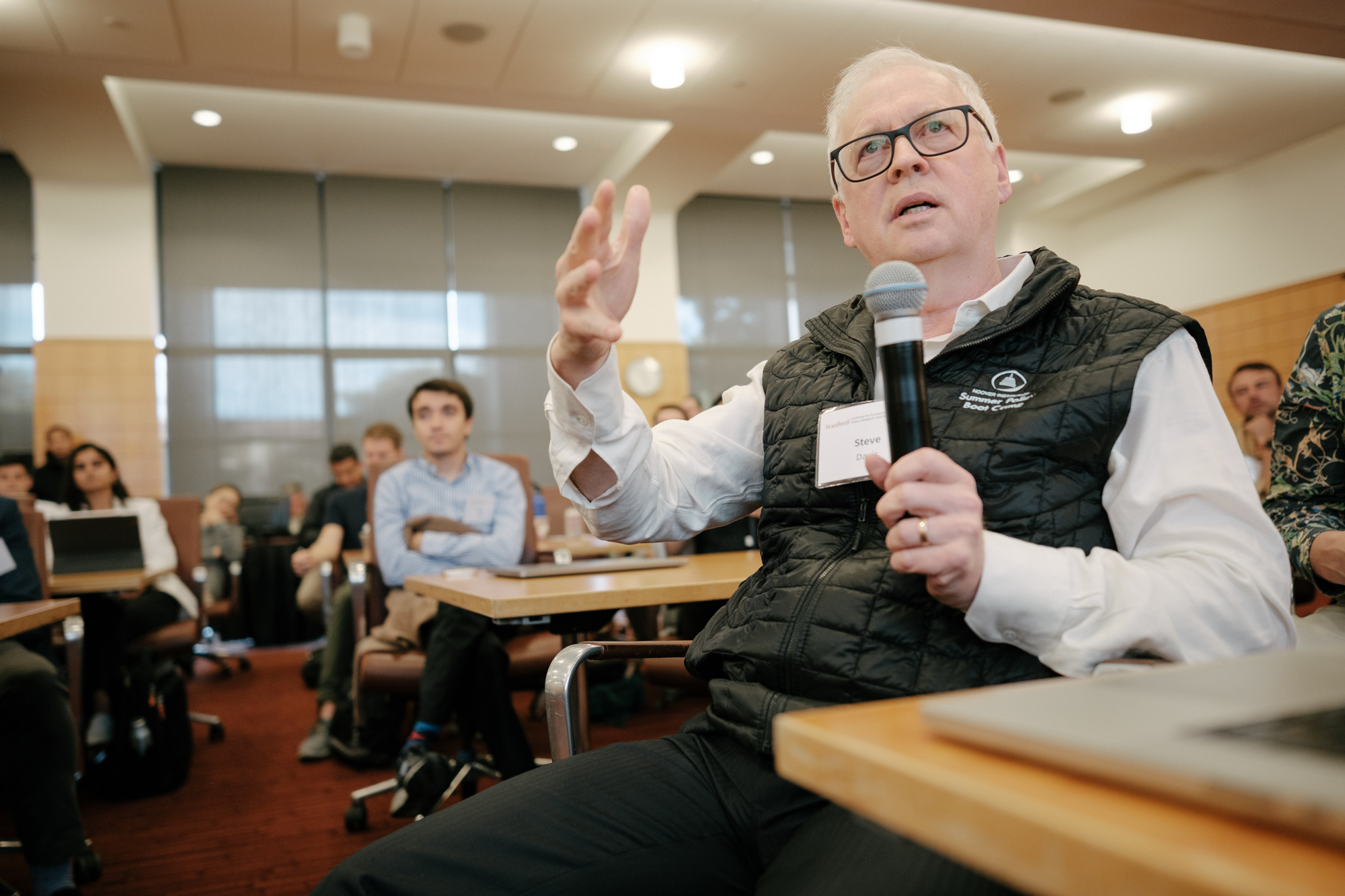Hoover Institution (Stanford, CA) — Remote work is not going away any time soon, with significant implications for the productivity and social dynamics of the workplace as well as large swaths of the global economy.
That’s what presenters at the 2024 Implications of Remote Work Conference, cosponsored by the Hoover Institution and the Stanford Institute for Economic Policy Research, demonstrated October 9‒11 with their research.
Scholars from around the world presented papers on a range of topics concerning how much employees value the opportunity to work remotely, the costs and benefits of remote work for firms, and what is driving some firms to institute mandatory return-to-office orders.
Other papers explored the impact of remote work on the commercial real estate and finance sectors and disruptions to the labor market caused by the appeal of remote and hybrid work.
Hoover senior fellow and research director Steven J. Davis, who helped organize the conference, is a leading national voice on the rise of working from home. He said the increase in remote work brings enormous challenges but also unexpected opportunities.
“The rise of remote work has altered how we work, where we live, and how firms operate,” Davis said. “It presents big challenges for cities and transit systems, even as it offers new opportunities for people who live outside large cities, persons with impaired mobility, and couples trying to manage two careers.”
According to the monthly Survey of Working Arrangements and Attitudes, which Davis cofounded, remote work accounted for 28 percent of all paid workdays, even well into 2024. His research also provides evidence that the rise of hybrid and remote work options dampened aggregate wage growth in the United States in 2022 and 2023.
The Effect of Return-to-Office Mandates
Seizing on a prominent theme in the business press right now, Mark Ma of the University of Pittsburgh took a closer look at the return-to-office mandates issued by several large firms in recent months, with some ordering a near total end to the option of remote or hybrid work.
Ma looked at the collision between the sentiment of some CEOs, who said working from home made workforces less productive, and the sentiment of workers themselves, who indicated that the ability to have more control over their own schedules made them more productive. He found that publicly traded companies that experienced a recent major decline in their stock prices were more likely to announce a return to the office.
Ma suggested that CEOs facing stock declines use return-to-office mandates as a means of demonstrating to their boards that they are taking robust action to counter the stock decline. He also found announcing a return-to-office mandate had no bearing on a firm’s profitability or market valuation in the short term after the announcement.
Working from Home and the Real Estate Market
But the work-from-home phenomenon has certainly had a bearing on the commercial real estate market.
Erica Moszkowski of the Federal Reserve showed research that indicated the rise of working from home and the ensuing drop in demand for office space have “reduced commercial real estate valuations dramatically,” with a significant knock-on effect on lenders.
Moszkowski found that banks together hold about 61 percent of all commercial real estate debt in America.
Banks that are more exposed to the work-from-home shock experience more loan distress, have more charge-offs and write-downs of their loans, originate fewer new loans, and may even stop lending in certain areas.
Some evidence indicates that these heavily indebted banks might even reduce residential real estate lending as a result.
Increased Diversity and Productivity
Another paper, coauthored by Davis and colleagues at Stanford and in France and Turkey, examined the dynamics of a medium-size call center and customer service outsourcing firm called Tempo BPO, which saw a dramatic change in the composition of its head count after all its employees went fully remote in March 2020 in response to the pandemic.
On average, the profile of its workforce became older, more educated, and drawn more from rural and suburban areas outside major cities in Turkey. In addition, the share of married women working at the firm increased considerably.
These changes showed how moving to fully remote work settings broaden the talent pool for various jobs, freeing prospective employees from concerns about commuting and making it easier for those with young children to work full time.
Looking at measures of productivity, the study found that call center workers took more calls per hour and increased the overall time spent working each day after the firm went remote. Call quality also improved by several measures.
The study also found that call-center workers with low performance scores before the pandemic experienced larger performance improvements after Tempo BPO pivoted to fully remote work than those who already performed to a decent standard.
The Downsides of Hybrid and Remote Work
Other researchers presented work on the downside of the hybrid work environment: the rising feeling among workers that, whether in the office or at home, there is constant pressure to reply to work messages immediately, as quick responses are seen as a sign of diligence and commitment.
Researchers in several studies have found that in-person socializing with colleagues on their days in the office kept workers from engaging in the most productive so-called “deep” or “focused” work.
To fix this, Harvard Business School’s Ashley Whillans proposed the idea of “team collaboration norms” and evaluated how effective they could be in decluttering and calming the hybrid work environment.
She found that the method that best enables teams to refrain from the need for immediate responses is instituting a formal, codified policy that encourages periodic disconnection from all workplace communications.
A formal disconnect policy appeared to be necessary in some instances. Whillans described a worker she came across in her research who told her they would run for exercise in strictly demarcated 10-minute blocks, never going farther than a half-block away from their home, “because they were scared of missing something on Microsoft Teams.”
Apart from her look into team collaboration norms, Whillans also found that during the first two years of the COVID-19 pandemic, the average length of the American workday increased by more than 8 percent, or 48.5 minutes.
What is Working from Home Worth?
Beyond figuring out how to balance the conduct of a hybrid work environment, other scholars at the conference presented their best attempts at finding out what working from home is worth, both for firms and for individual employees.
David Powell of the RAND Corporation said the answer to that question, for both firms and employees, depends a lot on circumstances.
Twenty-six percent of firms he researched told him they save money by offering work-from-home options while 63 percent told him work-from-home options impact their bottom line negatively.
Workers now in offices full time told him that they would forgo an average of 9.4 percent of their wages to be able to work from home just one day a week.
How Remote Work Helps Start-Ups
But the rise of remote work has also generated value in another way: allowing tiny start-up firms the opportunity to build their workforces nationwide or even internationally the way large established firms do.
With the prospect of remote work, start-ups can access multiple locations and multiple parts of the national labor pool, the same way big, established firms with offices everywhere can.
Arpit Gupta of New York University’s Stern School of Business showed that start-ups can now scale faster than established companies due to hiring of remote workers.
And those remote workers turn out to be achieving higher productivity in their remote start-up jobs than their previous ones, Arpit said, citing data from the online code repository GitHub that showed the same employees boosting the size and frequency of their code contributions upon entering a new, remote job.
Remote Work and Female Empowerment
Building on the conclusions reached by other presenters at the conference, Hoover Fellow Suhani Jalota coauthored a paper that looked at remote work jobs as a pathway to meaningful, transformative employment for women in West Bengal, India.
As part of the study, the author team offered digital, gig-type jobs to women in West Bengal who would ordinarily stay out of the labor force for various reasons (childcare responsibilities, cultural expectations, etc.). Once they started earning their own incomes, however, many of them later took up better-paid work outside of the home.
The project also helped break through gender stereotypes in the region, where many men and elderly people expect women to stay at home and take care of the household rather than work.
“Flexible work arrangements can both attract women to the labor force and provide a gateway to outside-the-home jobs,” Jalota and her coauthors wrote in the study.
With the work-from-home phenomenon still only four years old for most working adults, many more avenues in this field are available for scholars to study.
Despite the musings of some CEOs and stereotypes about office workers shirking their duties while at home to watch movies in their pajamas instead, workers around the world have expressed genuine approval for working from home.
And as scholars at this conference showed, the idea that working from home lowers productivity rests on shaky ground, with several presenters at the conference showing evidence that remote work has lengthened average Americans’ workdays and allowed them to increase output.


























